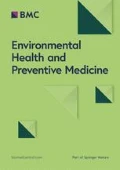Abstract
Objective
Chronic Interstitial Nephritis in Agricultural Communities (CINAC) causes major morbidity and mortality for farmers in North-Central province (NCP) of Sri Lanka. To prevent the CINAC, reverse osmosis (RO) plants are established to purify the water and reduce the exposure to possible nephrotoxins through drinking water. We assessed RO plant maintenance and efficacy in NCP.
Methods
We have interviewed 10 RO plant operators on plant establishment, maintenance, usage and funding. We also measured total dissolved solids (TDS in ppm) to assess the efficacy of the RO process.
Results
Most RO plants were operated by community-based organizations. They provide clean and sustainable water source for many in the NCP for a nominal fee, which tends to be variable. The RO plant operators carry out RO plant maintenance. However, maintenance procedures and quality management practices tend to vary from an operator to another. RO process itself has the ability to lower the TDS of the water. On average, RO process reduces the TDS to 29 ppm.
Conclusions
The RO process reduces the impurities in water available to many individuals within CINAC endemic regions. However, there variation in maintenance, quality management, and day-to-day care between operators can be a cause for concern. This variability can affect the quality of water produced by RO plant, its maintenance cost and lifespan. Thus, uniform regulation and training is needed to reduce cost of maintenance and increase the efficacy of RO plants.



References
Jayatilake N, Mendis S, Maheepala P, Mehta FR. Chronic kidney disease of uncertain aetiology: prevalence and causative factors in a developing country. BMC Nephrol. 2013;14:180.
Jayasumana C, Paranagama P, Agampodi S, Wijewardane C, Gunatilake S, Siribaddana S. Drinking well water and occupational exposure Herbicides is associated with chronic kidney disease, in Padavi-Sripura, Sri Lanka. Environ Health. 2015;14:6.
Jayasumana C, Gunatilake S, Siribaddana S. Simultaneous exposure to multiple heavy metals and glyphosate may contribute to Sri Lankan agricultural nephropathy. BMC Nephrol. 2015;11(16):103.
Siriwardhana EARIE, Perera PAJ, Sivakanesan R, Abeysekara T, Nugegoda DB. Dehydration and malaria in augmenting the risk of developing chronic kidney disease in Sri Lanka. Indian J Nephrol. 2014;24:1–6.
www.waterboard.lk/web/index.php?option=com_content&view=article&id=48&Itemid=208&lang=en#key-facts-and-figures. Accessed 21 June 2016.
Jayasumana C, Fonseka S, Fernando A, Jayalath K, Amarasinghe M, Siribaddana S, Paranagama P. Phosphate fertilizer is a main source of arsenic in areas affected with chronic kidney disease of unknown etiology in Sri Lanka. SpringerPlus. 2015;4:90.
http://www.undp.org/content/undp/en/home/sdgoverview/post-2015-development-agenda/goal-6.html. Accessed 21 June 2016.
Jayasumana C, Gunatilake S, Senanayake P. Glyphosate, hard water and nephrotoxic metals: are they the culprits behind the epidemic of chronic kidney disease of unknown etiology in Sri Lanka? Int J Environ Res Public Health. 2014;11:2125–47.
Abeygunasekera A, Wickremasinghe T. Short term measures to control chronic kidney disease of uncertain aetiology (CKDu). 2016. http://nas-srilanka.org/?page_id=202. Accessed 21 June 2016.
George CM, Smith AH, Kalman DA, Steinmaus CM. Reverse osmosis filter use and high arsenic levels in private well water. Arch Environ Occup Health. 2006;61(4):171–5.
Fu F, Wang Q. Removal of heavy metal ions from wastewaters: a review. J Environ Manag. 2011;92(3):407–18.
Lakherwal D. Absorption of heavy metals: a review. Int J Environ Res Dev. 2014;4(1):41–8.
Jayasinghe P, Herath B, Wikramasinghe N. Technical review report: based on visit to anuradhapura CKDu affected area. Coordinating Secretariat for Science, Technology and Innovation (COSTI); 2015;1(1):1–26.
Acknowledgments
Annual research Grant of the Rajarata University of Sri Lanka (RUSL/2014/06) provided the financial support. Non-academic staff of the Faculty of Medicine, Rajarata University of Sri Lanka is acknowledged.
Author information
Authors and Affiliations
Corresponding author
Ethics declarations
Conflict of interest
The authors declare that they have no conflict of interest. The founding sponsors had no role in the design of the study; in the collection, analyses, or interpretation of data; in the writing of the manuscript, and in the decision to publish the results.
Rights and permissions
About this article
Cite this article
Jayasumana, C., Ranasinghe, O., Ranasinghe, S. et al. Reverse osmosis plant maintenance and efficacy in chronic kidney disease endemic region in Sri Lanka. Environ Health Prev Med 21, 591–596 (2016). https://doi.org/10.1007/s12199-016-0580-9
Received:
Accepted:
Published:
Issue Date:
DOI: https://doi.org/10.1007/s12199-016-0580-9

